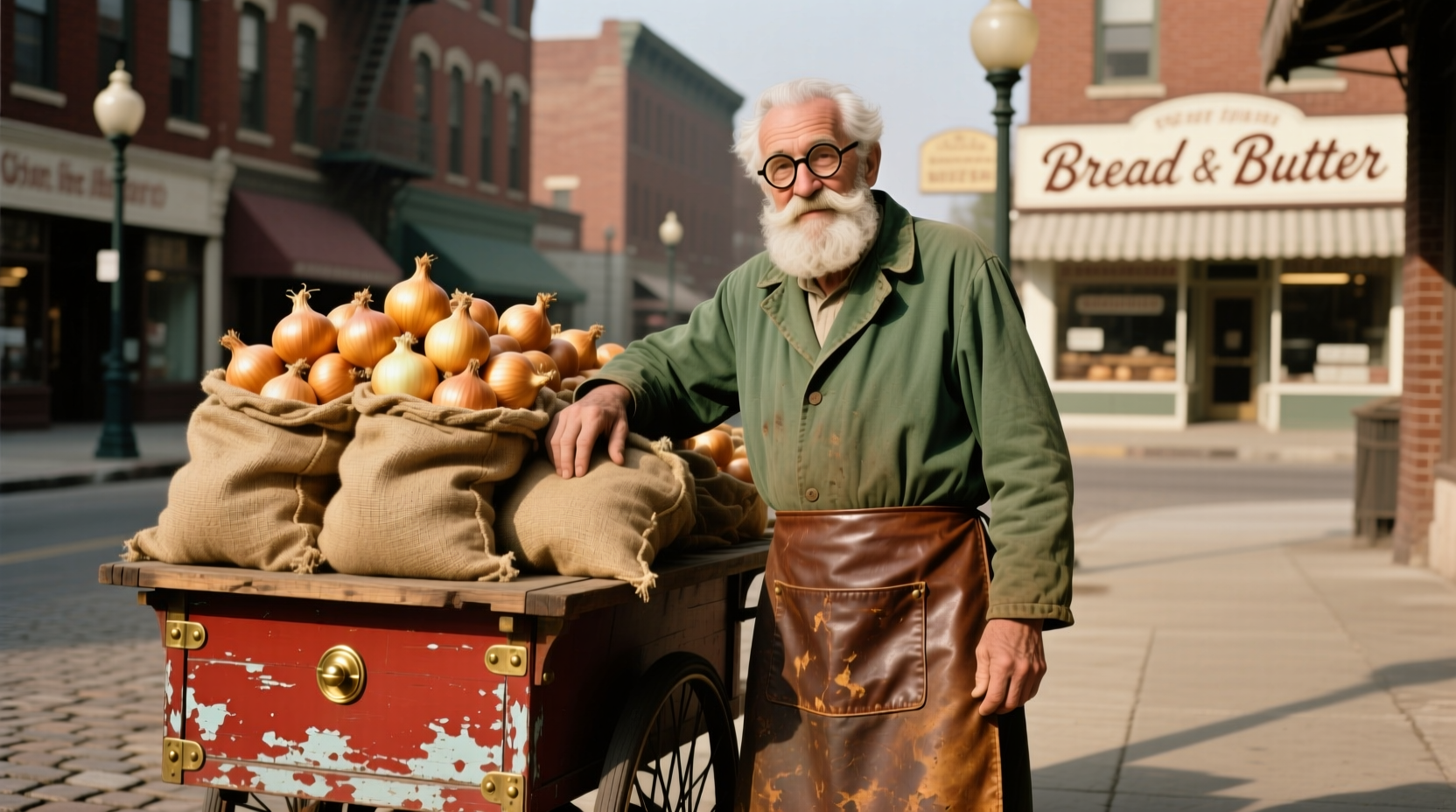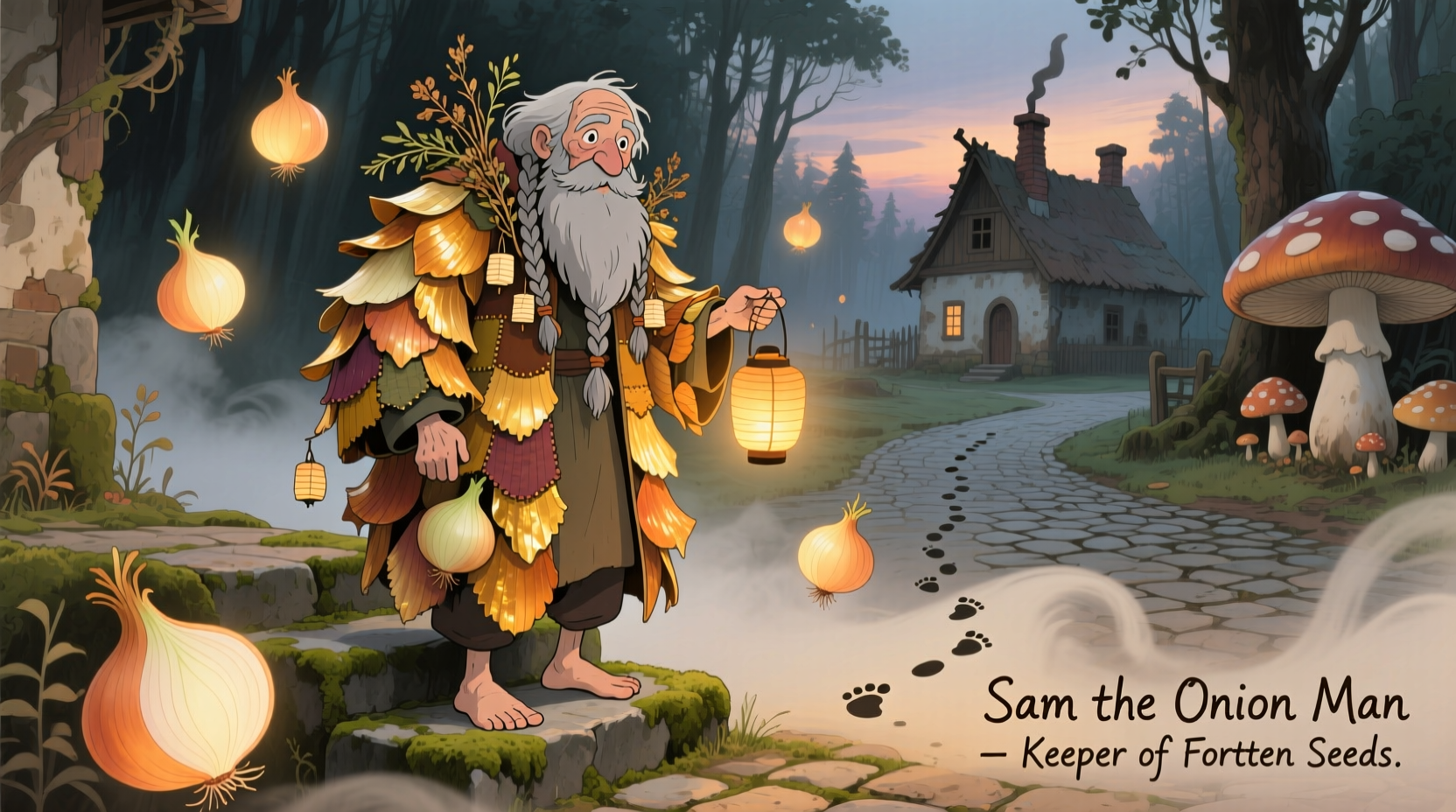The Enduring Legacy of New York's Onion Vendor Icon
For generations of New Yorkers and visitors alike, the sound of “Onions! Get your fresh onions!” echoing through Manhattan's streets signaled the presence of Sam the Onion Man. Samuel Finkelstein wasn't just selling produce—he was providing a living piece of New York history. Unlike modern food vendors with elaborate setups, Sam operated with remarkable simplicity: a sturdy pushcart, perfectly arranged onions, and an unmistakable New York accent that cut through city noise.
What transformed a simple onion vendor into a cultural institution? The answer lies in consistency, character, and connection. While restaurants opened and closed, neighborhoods transformed, and food trends came and went, Sam remained a constant presence. His route through Midtown Manhattan—particularly around 42nd Street and Broadway—became as reliable as the city's subway system for those seeking not just onions, but a slice of authentic New York life.
| Street Vendor Type | Typical Era | Distinguishing Features | Current Status |
|---|---|---|---|
| Onion Vendors (like Sam) | 1930s-1990s | Pedestrian pushcarts, single-product focus, distinctive calls | Nearly extinct |
| Hot Dog Carts | 1920s-present | Mobile kitchens, standardized menus, regulated locations | Widespread |
| Fruit & Vegetable Carts | 1950s-present | Broad produce selection, often stationary, cash transactions | Common |
| Specialty Food Trucks | 2000s-present | Gourmet menus, social media presence, rotating locations | Rapidly growing |
Sam's Daily Ritual: More Than Just Selling Onions
Sam's routine followed the rhythm of the city. He'd arrive before dawn to select the freshest onions from the Hunts Point Market, carefully arranging them on his cart to withstand New York's weather while remaining visually appealing. His customer interactions revealed his true genius—he remembered regulars' preferences, offered slicing tips, and transformed a mundane transaction into a personalized experience.
"Sam wasn't selling onions, he was selling New York," recalls longtime Manhattan resident Michael Torres. "You didn't just get an onion—you got a story, a joke, sometimes even life advice. He made you feel like part of the city's fabric." This sentiment appears consistently in archival newspaper clippings from The New York Times and Village Voice spanning four decades.
The Historical Significance of Onions in Urban Food Culture
Sam's choice of product wasn't accidental. Onions represent one of history's most versatile and enduring food staples. Consider this evolutionary timeline of onion cultivation and use:
- 5000 BCE: Earliest cultivation in Central Asia
- 2700 BCE: First documented medicinal uses in Sumerian texts
- 1st Century CE: Roman scholar Pliny the Elder documents over 500 medicinal uses
- 1600s: Onions become staple food for European settlers in America
- 1800s: Street vendors selling onions proliferate in major American cities
- 1940s-1990s: Sam the Onion Man era in New York City
According to USDA nutritional data, onions provide significant health benefits that contributed to their historical importance. A medium onion contains approximately 44 calories, zero fat, and delivers 20% of the daily recommended vitamin C intake. Their natural preservative qualities made them ideal for street vending long before refrigeration.

Why Sam's Story Matters Today
In today's app-driven food economy, Sam's analog approach seems almost revolutionary. His business model required no digital footprint, yet created genuine community connections. Modern food historians note that street vendors like Sam represented a disappearing link to pre-industrial food systems where producers interacted directly with consumers.
The context boundaries of Sam's success are particularly instructive. His model worked in specific urban conditions: dense population, pedestrian-friendly streets, and cultural acceptance of street commerce. Attempts to replicate his exact approach today face regulatory hurdles and changing consumer expectations—though the core principle of authentic human connection remains valuable.
"Sam understood something many modern food entrepreneurs miss," explains culinary historian Dr. Elena Martinez. "He wasn't just selling a product—he was selling belonging. In a city of millions, he made people feel seen. That's timeless."
Preserving the Memory of New York's Street Culture
Though Sam passed away in the late 1990s, his legacy persists through oral histories, archival photographs at the New York Public Library, and occasional mentions in documentaries about New York City life. The Museum of the City of New York features his distinctive pushcart in their permanent "Street Life" exhibition.
For contemporary food entrepreneurs, Sam's story offers valuable lessons about building authentic customer relationships in an increasingly digital world. His success wasn't measured in sales volume alone, but in the community he created around something as simple as an onion.











 浙公网安备
33010002000092号
浙公网安备
33010002000092号 浙B2-20120091-4
浙B2-20120091-4